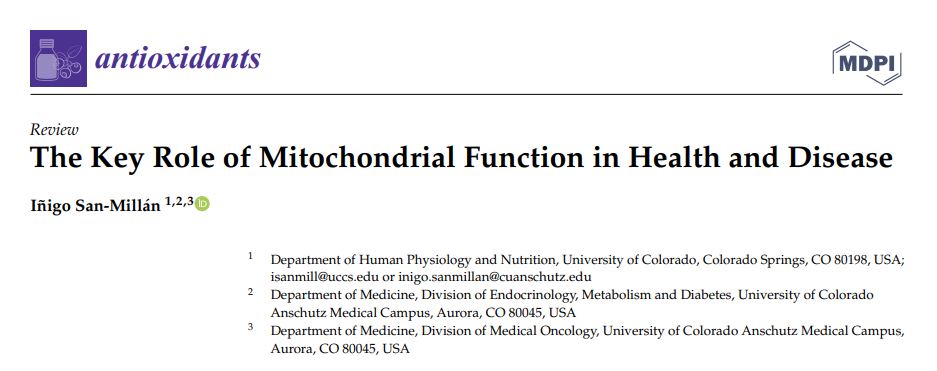“Mitochondrial function is key in health and disease.” – Inigo San-Millan
Part 5. Notes from this fantastic review paper by Inigo San-Millan.
Okay I will attempt to summarize the bioenergetics of mitochondria and the krebs cycle. Fatty acids convert to Acyl-CoA. They then undergo β–oxidation and are converted to Acetyl-CoA for oxidation in the Krebs cycle.
Pyruvate, is transported across the mitochondria by the mitochondrial pyruvate carrier (MPC) and oxidized to Acetyl-CoA by pyruvate dehydrogenase (PDH).
Therefore, cellular bioenergetics can be significantly disrupted if any of this transporters are dysfunctional.
San-Millan mentions that lactate is a canonical component of cell biology and at the crossroads of cellular bioenergetics and intermediary metabolism. Lactate behaves as a lacthormone and possesses multiple endocrine, paracrine, and autocrine properties.
Lactate is an obligatory byproduct of glycolysis. Remember: glycolysis occurs in the cell’s cytosol. the lactate produced is shuttled into the intracellular mitochondria. The lactate is oxidized through the mitochondrial lactate oxidation complex (mLOC). Famous lactate researcher George Brooks discovered this bioenergics hypothesis and coined the term the: “Intracellular lactate shuttle”.
If the mitochondria’s capacity to oxidize lactate is exceeded, lactate is sent to the blood to transport to the liver to be converted back into glucose. Basically, blood lactate concentration will build after this tipping point.
GLUT4 is a receptor found in skeletal muscle. GLUT4 facilitates glucose uptake into the muscle cell in response to exercise, this is called non-insulin dependent glucose uptake, and/or insulin. Too much lactate in the blood (aka lactemia) mRNA expression of GLUT4 in skeletal muscle is decreased leading to a decrease in glucose uptake and oxidation.
Furthermore, lactate binds to the G–protein–coupled receptor (GPR81)
on adipocytes, which inhibits lipolysis.
The take-home is that lactate is a massive component of cell biology and cellular bioenergetics. It can disrupt the uptake of glucose into skeletal muscle and it can inhibit the breaking up and release of fatty acids (lactate decreases lipolysis).
Remember that long-chain fatty acids need to be transported through CPT-1/2 Moreover, it has been recently shown that lactate decreases the activity of both CPT1 and CPT2 in neonatal rat cardiomyocytes, disrupts cardiolipin species, increases reactive oxidative species (ROS), and disrupts cellular bioenergetics by decreasing the rate of ATP production. A decrease in lactate and fat oxidation (FATox) by mitochondria, as in the case of T2D or metabolic syndrome, indicates
a direct relationship between lactatemia and FATox.
Metabolic flexibility – the ability to respond or adapt to conditional changes in metabolic demand. Metabolic flexibility and mitochondrial function are closely intertwined as under resting and post–prandial conditions both fat and glucose are oxidized in mitochondria
via OXPHOS. My take – the ability to use both fat and carbohydrate as fuel sources.
Interesting: Before the innovative studies
by Kelly and Mandarino, DeFronzo and colleagues had shown that under euglycemic
hypersinsulinemic clamp conditions, skeletal muscle uptakes and metabolizes ~85% of all
glucose.
San-Millán I. The Key Role of Mitochondrial Function in Health and Disease. Antioxidants (Basel). 2023;12(4):782. Published 2023 Mar 23. doi:10.3390/antiox12040782

